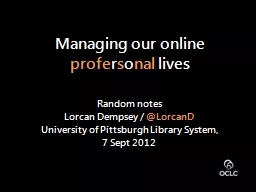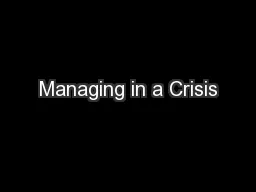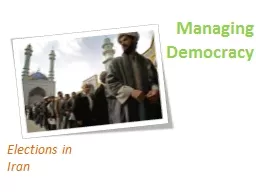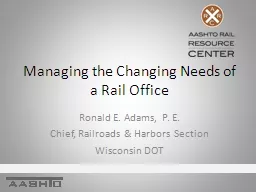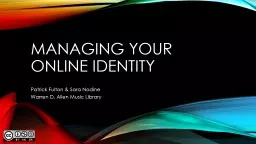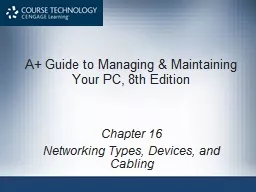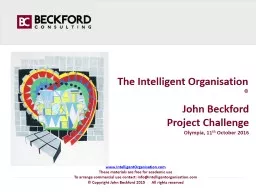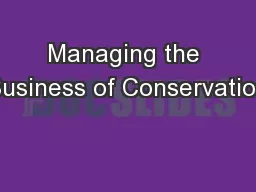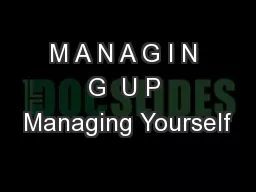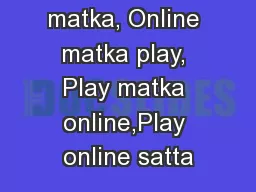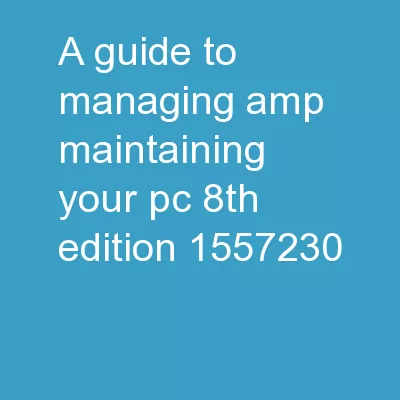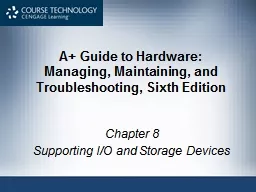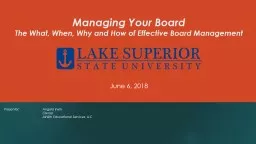PPT-Managing our online
Author : faustina-dinatale | Published Date : 2016-03-05
profe r s o nal lives Random notes Lorcan Dempsey LorcanD University of Pittsburgh Library System 7 Sept 2012 OverviewConclusions 5 parts There are different
Presentation Embed Code
Download Presentation
Download Presentation The PPT/PDF document "Managing our online" is the property of its rightful owner. Permission is granted to download and print the materials on this website for personal, non-commercial use only, and to display it on your personal computer provided you do not modify the materials and that you retain all copyright notices contained in the materials. By downloading content from our website, you accept the terms of this agreement.
Managing our online: Transcript
Download Rules Of Document
"Managing our online"The content belongs to its owner. You may download and print it for personal use, without modification, and keep all copyright notices. By downloading, you agree to these terms.
Related Documents

